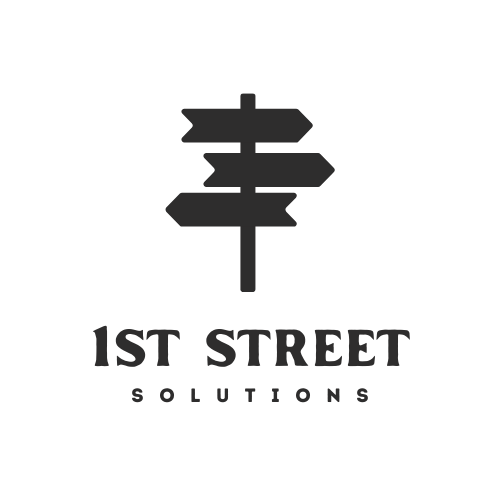Global Coffee Market Size and Share Analysis – Growth Trends and Forecast Report 2025-2033
Market Overview The global coffee market is projected to reach US$ 186.55 billion by 2033, rising from US$ 121.69 billion in 2024, at a CAGR of 4.86% from 2025 to 2033. Coffee, one of the world’s most consumed beverages, continues to gain popularity, especially in emerging economies like those in the Asia Pacific. Market growth is propelled by changing consumer lifestyles, increased disposable incomes, and a rapidly growing coffee culture.
Coffee Industry Overview Coffee originates from ripe cherries of the Coffea plant, with caffeine being the key stimulant. Its cultural, social, and functional significance drives global consumption. Coffee is not just a beverage but a lifestyle, particularly entrenched in hospitality, food services, and café culture. Research links coffee to various health benefits, such as reduced risks of heart disease, depression, Alzheimer’s, and Type 2 diabetes.
The market is being shaped by evolving consumer preferences toward certified, sustainable, and premium coffee offerings. Specialty, gourmet, and organic coffees are capturing significant market share due to their distinct flavor profiles and superior quality. Convenience formats like pods and capsules are also expanding.
However, the industry faces challenges including climate change, supply chain disruptions, geopolitical tensions, and diseases like coffee rust, which affect production. Brazil, Vietnam, and Colombia remain leading producers, influencing global price and supply dynamics. In 2023-24, USDA estimates Brazil’s coffee production at 66.4 million bags, Vietnam at 31.3 million bags, and Colombia at 11.6 million bags.
Key Growth Drivers
- Government Initiatives: Many countries are introducing initiatives to support coffee cultivation. The Vietnamese government, for example, promotes sustainable farming through its Coffee Plan to 2030. India also offers subsidies to enhance coffee output.
- Rise of Global Coffee Chains: Brands like Starbucks, Coffee Day, and Costa Coffee are expanding rapidly, popularizing premium coffee culture. Their focus on ambiance, free Wi-Fi, and social space is attracting young consumers and professionals.
- Growing Specialty Coffee Demand: Urban populations are embracing artisanal coffee. There is rising interest in ethically sourced, single-origin beans and gourmet brewing techniques. This reflects a larger consumer shift toward quality and experience.
- Technological Innovations: Automatic espresso machines, smart brewers, and app-enabled coffee makers are revolutionizing home coffee consumption. These innovations are making premium coffee experiences accessible at home.
Market Challenges
- Alternative Beverages: Tea, plant-based lattes, and energy drinks are gaining ground due to perceived health benefits and lower caffeine content. Coffee brands must innovate to retain health-conscious consumers.
- Labor Shortages: Coffee farming is labor-intensive. Aging farmer populations and a lack of interest among younger generations are contributing to supply-side issues. Mechanization offers partial solutions but cannot fully replace skilled labor.
Related Reports
- Europe Ready to Drink Coffee Market Size and Share Analysis – Growth Trends and Forecast Report 2025-2033
- United Arab Emirates Ready Drink Tea and Coffee Market Size and Share Analysis – Growth Trends and Forecast Report 2025-2033
- Nigeria Ready Drink Tea and Coffee Market Size and Share Analysis – Growth Trends and Forecast Report 2025-2033
Regional Market Insights
United States: The U.S. coffee market is robust and driven by specialty coffee, RTD formats, and home brewing. Major players like Starbucks and Dunkin’ dominate, but independent cafés and sustainable products are gaining traction. Americans consume approximately 400 million cups of coffee daily, with average per capita consumption at three cups per day.
United Kingdom: The UK market is driven by café culture, with around 95 million cups consumed daily. Specialty coffee and sustainable practices are gaining popularity. RTD coffee and pods are expanding, with Costa and independent cafés leading the way.
China: Urbanization, rising middle class, and Western influence are propelling coffee growth in China. While per capita consumption remains low, the growth potential is vast. Starbucks and local brands are expanding, and RTD products are witnessing a boom.
United Arab Emirates: UAE has a blend of traditional Arabic coffee culture and modern premium cafés. Demand for artisanal coffee, RTD formats, and sustainable sourcing is growing rapidly, especially among younger consumers.
Coffee Market Segmentation
By Product Type:
- Instant Coffee
- Ground Coffee
- Whole Grain
- Others
By Distribution Channel:
- Supermarket/Hypermarket
- Convenience Store
- Online Platform
- Others
By Country:
- United States
- Brazil
- Vietnam
- Colombia
- European Union
- China
- India
- Japan
- United Kingdom
- Indonesia
- Canada
- Ethiopia
- Philippines
- Mexico
- Russia
- South Korea
- Australia
- Saudi Arabia
- Algeria
- Switzerland
- Turkey
- Morocco
- Argentina
Key Questions Addressed in the Report:
- What is the projected market size of the global coffee industry by 2033?
- Which factors are driving the growth of the global coffee market?
- What are the major challenges facing coffee producers and suppliers?
- Which countries are the leading coffee producers globally?
- How is consumer preference shifting in terms of coffee type and format?
- What impact does climate change have on coffee production?
- How are government policies supporting coffee cultivation?
- What are the major trends in coffee consumption across developed and developing economies?
- Who are the key players in the coffee market and what strategies are they adopting?
- How is technology influencing home brewing and specialty coffee demand?



